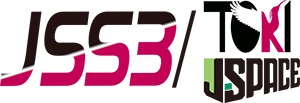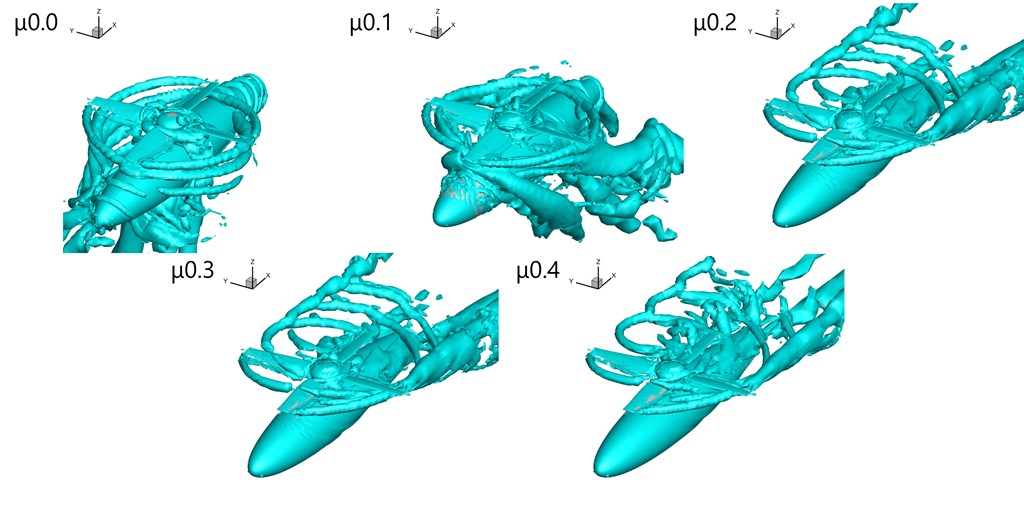Aerodynamic and Aeroelastic analysis for rotorcraft
JAXA Supercomputer System Annual Report February 2024-January 2025
Report Number: R24EDA102C21
Subject Category: Aeronautical Technology
- Responsible Representative: Kanako Yasue, Aviation Technology Directorate, Aviation Integration Innovation Hub
- Contact Information: Hideaki Sugawara(sugawara.hideaki@jaxa.jp)
- Members: Fumihiro Kajiwara, Keita Kimura, Hideaki Sugawara, Yasutada Tanabe
Abstract
This project involves numerical simulations related to the aerodynamics and aeroelasticity analysis for rotorcraft, which is being carried out in the aviation technology directorate. The aerodynamic performance of next-generation rotorcraft is evaluated, and technology issues and newly designed shapes are investigated through numerical simulations. Additionally, numerical simulation results are provided for preliminary studies supporting wind tunnel tests and flight tests.
Reference URL
N/A
Reasons and benefits of using JAXA Supercomputer System
It is necessary to perform efficient computations using the JAXA supercomputer to analyze detailed flow fields around rotorcraft for numerous computational cases.
Achievements of the Year
CFD analysis is conducted in preliminary wind tunnel tests for the development of next-generation rotorcraft and helicopter rotor blades for international workshop. In the development of next-generation rotorcraft, aerodynamic analysis is conducted based on the initial rotorcraft design, and several technology issues are identified through numerical simulations. Additionally, the results of the numerical simulations are used in the planning of the wind tunnel tests. Figure 1 shows examples of numerical simulation results. For the international workshop, aeroelastic analysis of the rotor blades is mainly carried out. The numerical results are compared with those of the workshop partners and issues related to numerical simulations and wind tunnel testing plans are discussed.
Publications
- Non peer-reviewed papers
Sugawara and Tanabe, "Evaluation of Airframe Aerodynamics for Electric Vertical Take-Off and Landing Aircraft," 62nd Aircraft Symposium
Tanabe and Sugawara, "Induced Velocity Distribution on a Lift-Rotor of an eVTOL Aircraft," 62nd Aircraft Symposium
Usage of JSS
Computational Information
- Process Parallelization Methods: N/A
- Thread Parallelization Methods: OpenMP
- Number of Processes: 1
- Elapsed Time per Case: 240 Hour(s)
JSS3 Resources Used
Fraction of Usage in Total Resources*1(%): 0.17
Details
Please refer to System Configuration of JSS3 for the system configuration and major specifications of JSS3.
| System Name | CPU Resources Used(Core x Hours) | Fraction of Usage*2(%) |
|---|---|---|
| TOKI-SORA | 30.09 | 0.00 |
| TOKI-ST | 1328026.19 | 1.36 |
| TOKI-GP | 0.00 | 0.00 |
| TOKI-XM | 0.00 | 0.00 |
| TOKI-LM | 108.01 | 0.01 |
| TOKI-TST | 34483.20 | 0.62 |
| TOKI-TGP | 0.00 | 0.00 |
| TOKI-TLM | 0.00 | 0.00 |
| File System Name | Storage Assigned(GiB) | Fraction of Usage*2(%) |
|---|---|---|
| /home | 59.00 | 0.04 |
| /data and /data2 | 112671.60 | 0.54 |
| /ssd | 604.42 | 0.03 |
| Archiver Name | Storage Used(TiB) | Fraction of Usage*2(%) |
|---|---|---|
| J-SPACE | 0.00 | 0.00 |
*1: Fraction of Usage in Total Resources: Weighted average of three resource types (Computing, File System, and Archiver).
*2: Fraction of Usage:Percentage of usage relative to each resource used in one year.
ISV Software Licenses Used
| ISV Software Licenses Used(Hours) | Fraction of Usage*2(%) | |
|---|---|---|
| ISV Software Licenses(Total) | 53.09 | 0.04 |
*2: Fraction of Usage:Percentage of usage relative to each resource used in one year.
JAXA Supercomputer System Annual Report February 2024-January 2025



